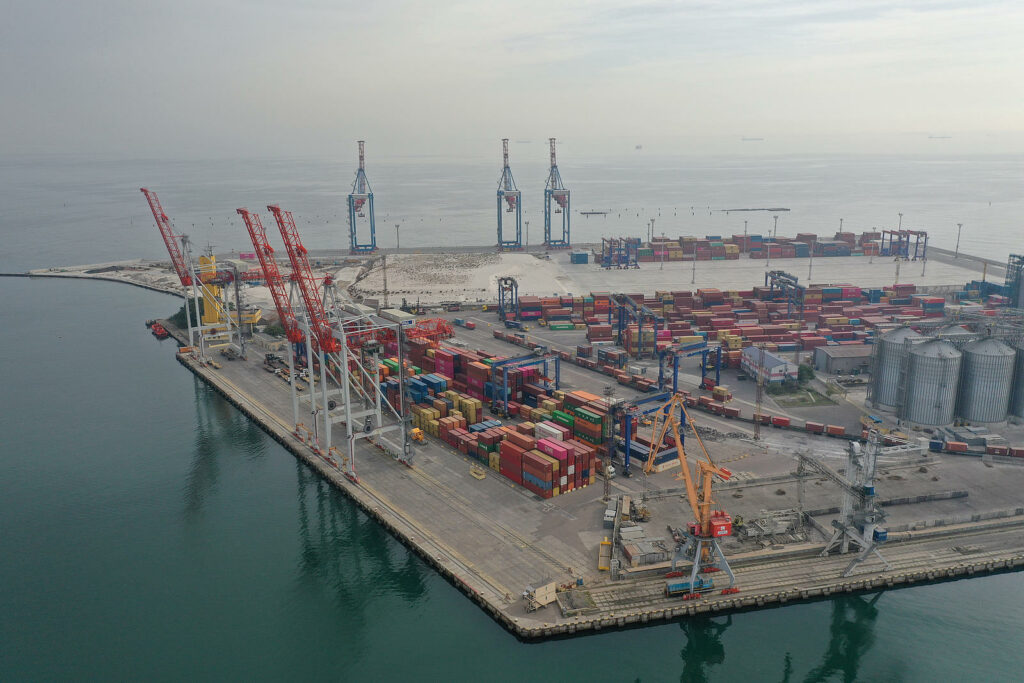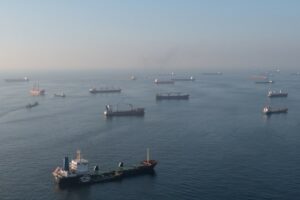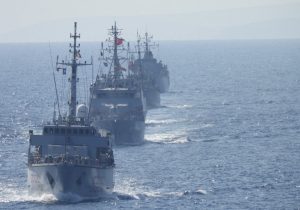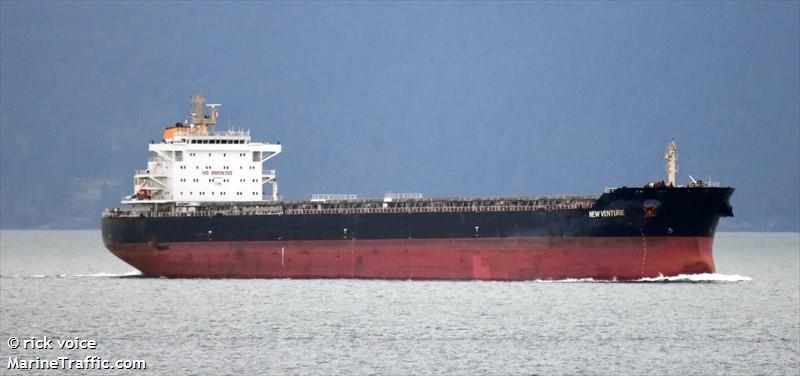Will the Black Sea container lines be able to make money on the growth of freight?

The activity of global container lines is declining. How can regional line operators benefit from this? INFORMALL BG analysts talk about the situation in the Mediterranean and Black Sea container markets.
It has been well noted that global ocean carriers reoriented a fair chunk of their capacities to the Transpacific and Asia-Europe tradelines in 2H 2020 – 2021 due to skyrocketing spot rates and unprecedented demand for the tonnage and empty container equipment in South-East Asia. This move caused regional freight rates to go up too providing a window of opportunity for regional shipping lines to regain the market share in the Black Sea. Is that a real chance for regional container carriers to grow their market share or is it just a short-term market gain?
Vassiliy Vesselovski from Informall BG is sharing his vision of the current situation on the Black Sea market.
Mainly, the Black Sea region is operating as a combination of feeder services to major container hubs of Turkey and other East Mediterranean terminals with further transshipment onto “mother vessels’’. While both global and regional lines have similar strategies on the market, their operation approach could be different. Global carriers optimize their logistics needs on account of regional trades in order to arrange the best utilization of their ocean tonnage, while regional carriers aim for the commercial efficiency of their services. Basically, globals’ main idea is to manage container allocation and ensure well-co-ordinated positioning of empty equipment within a region with the aim of generating freight flows for their lucrative ocean services.
Ocean carriers’ operational approach decreases regional freight rates to a level where regional liner economics do not work with fair returns. The tonnage they operate does not fit into the freight rates global carriers create in the region. Eventually, regional lines shrink their market share and reorient their fleet to the tradelines with economically sustainable freight rates.
However, after spot rates on Transpacific and Asia-Europe routes surged, regional logistics management were no longer among the global carriers’ top priorities. Obviously, lines’ current priority is delivering empty equipment to the East Asia origins as quickly as possible so that the lines can pick up as much of the high paying cargo as possible. Naturally, globals are focusing on the volumes to direct ports in Europe giving favor to areas with short intermodal leg hinterlands. Globals collect available empty containers within the region and rush off in order to boost their ocean capacity. Moreover, some Ukrainian freight forwarders shared information with Informall BG that virtually all global shipping lines currently present in the region regularly reject regional (Mediterranean) bookings in and out of the Black Sea.
This situation has eased the pressure on regional lines, giving them room for maneuver. Less competition on the market has resulted in regional freight rates growing. For instance, rates from a Turkey hub to Ukraine and Russia today are almost twice higher than in pre-pandemic times and there are no expectations for rates to plunge. Increased regional freight rates and decreased global carriers’ activity allowed regional lines to grow and develop new services. Taking into account that both Mediterranean and Black Sea markets keep growing it is certainly a positive trend for regional shipping lines.
Informall BG: additionally, there are at least two other trends that are currently influencing shipping patterns in the region:
The first trend – local cargo owners switch their trading patterns from China to the Black Sea and Mediterranean markets avoiding ever high transocean freight rates in particular. Besides, the current unstable operation of major global container hubs (particularly in Asia) is further pushing traders to look for alternatives on the regional market in order to mitigate major delivery delays.
The second trend – “produce locally and buy local”. Amidst production disruptions and increased labor costs in China, we observe the relocation of the manufacturing sites to the Mediterranean region. Meaning eventually regional trade volumes will grow while transocean shrink within certain cargo categories. As an example, Turkey is one of the biggest in terms of regional trade volumes on a wide range of goods and commodities. Its geographical location and production capabilities may attract certain traders which previously were oriented on the Chinese market which in turn will create opportunities for regional lines.
Informall BG: we believe these trends altogether will positively affect the positions of regional carriers in the near future allowing them to develop new line services and gain market share.
Even today, amidst growing freight rates on feeder services, a mid-size ocean service tonnage appears on demand again. If this trend continues and ocean rates stay high enough, we will see a certain rise of mid-size liner and ad-hoc services deployed to the Black Sea and Mediterranean base markets directly from the Far East. Naturally, Mediterranean hubs might appear as strong competitors to NWC hubs amidst matured intermodal infrastructure availability for deliveries to the Continent. Currently, Mediterranean hubs are benefiting from both transit time and the absence of terminal congestion. Similarly, the Black Sea hubs might compete for the deliveries to Russia and Eastern Europe. Eventually, ambitious regional lines that own enough tonnage and equipment (whether it is booked newbuilding orders or chartered vessels) will expand their service to the ocean tradelines and create a new competition for larger carriers. Along with emerging opportunities for the regional container carriers, we may expect increased interest for the Mediterranean and the Black Sea direct service restoration from those Liner Operators who used to serve the Far East trade in the past. Shipping lines such as Wan Hai Lines and PIL (Pacific International Line) could be among them. There is a fair chance that by the time globals come back to the region at full capacity they will encounter market competitors they do not see today.
Alexander Khromov of Informall BG looked into the regional statistics to find correlations with the current trends.
The Black Sea region is bordered by 5 countries: Bulgaria, Romania, Ukraine, Russia (Black Sea coast), and Georgia. The region features a diversity of tradelines and the market is growing in both mainline and regional volumes. According to Informall BG data the region’s total container turnover in 9M 2021 accounts at 2 326 889 TEU including empty equipment and 1 801 473 TEU of laden containers in total. The 4,45% increase in laden containers in the 9M 2021 period shows sustainable growth of the market on a year-to-year basis. It is important to highlight that the Black Sea market is well balanced in terms of Import/Export trades and as data shows all mentioned countries (except Georgia) show great equipment balance efficiency. All members of global carrier alliances are actively present in the Black Sea region, with exception of HMM. For example, 2M (Maersk Line, MSC) represents 47,1% of total laden container turnover, Ocean Alliance (CMA CGM, COSCO, EMC, OOCL) is another 25,1%, and THE Alliance (Hapag Lloyd, ONE, Yang Ming) 11,4% in the 9M period of 2021. Globals indeed hold a major share in both Mediterranean and the Black Sea region which limits regional lines’ growth, however, due to mentioned reasons and trends, we may see a different picture in the near future.

As global carriers have retreated from regional services and focused on the more lucrative major tradelanes, regional carriers such as Medkon Line and Akkon Line have launched services to the CTO (HHLA Group, Ukraine) and DPW TIS (DP World, Ukraine), NUTEP (Russia) terminals in Q4 2020 for the first time in order to meet emerging demand from shippers. Their current Black Sea laden-container market share is fairly small at around 0,13% and 0,26% respectively, however, the decision to enter the region confirms that regional carriers are indeed benefitting from the shrunken ocean carriers’ activity in regional trades.
The analysis and material are based on the data collected and provided by Informall BG, the leading cargo&trade analytical bureau in the Black Sea region.





